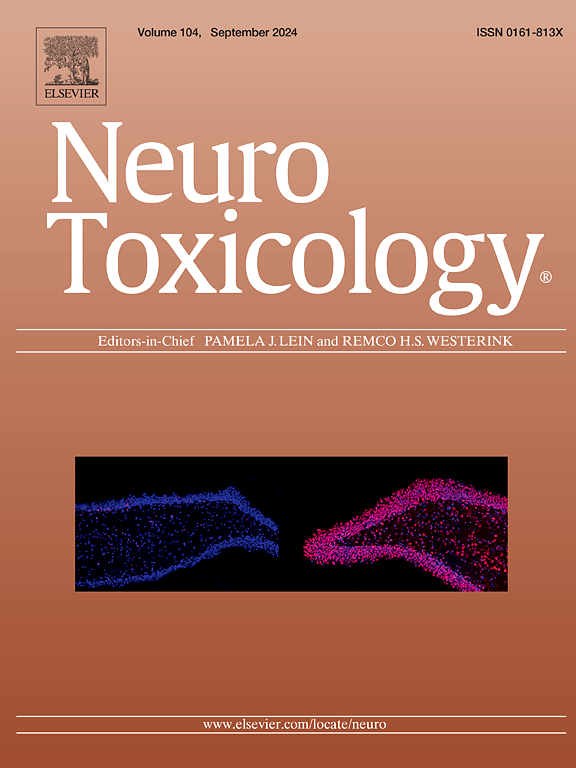THC, CBD and minor cannabinoid CBDV differently modulate hippocampal neurons firing
IF 3.9
3区 医学
Q2 NEUROSCIENCES
引用次数: 0
Abstract
Cannabis sativa L. presents a very complex composition that includes several secondary metabolites besides the two main compounds, Δ9-tetrahydrocannabinol (THC) and cannabidiol (CBD). Many of these minor cannabinoids are still under investigation and are arousing increasing interest for their biological effects and potential therapeutic roles. Cannabis sativa extracts, either properly purified and enriched with cannabinoids, were tested here on the neuronal activity, by monitoring the spontaneous firing rate and the bursts generation of cultured hippocampal neurons. In particular, we focused on the combined effect of THC, CBD and cannabidivarin (CBDV), a non-psychoactive homologue of CBD whose side chain has two fewer carbon atoms, and their related standard compounds. We found that standard THC, recognised for its psychoactive impact and side effects including anxiety and paranoia, significantly decreased the spontaneous firing discharge of cultured hippocampal neurons, whether applied alone or in combination with standard CBD at comparable concentrations. In contrast, the firing activity did not exhibit any significant alterations when CBD was administered alone. When C. sativa extracts were tested, we found that CBDV was able to reverse the inhibition of the firing discharge caused by the mixture of THC and CBD. Furthermore, when administered alone, CBDV significantly increased the firing discharge of hippocampal neurons. In all tested conditions, the effects exerted by standard compounds or extracts were restored to control conditions after 24 hours from administration. Overall, these data unravel a novel action of CBDV in reverting the detrimental effect exerted by the THC+CBD on neuronal firing activity.
四氢大麻酚、CBD和少量大麻素CBDV对海马神经元放电的调节不同
大麻是一种非常复杂的成分,除了两种主要化合物Δ9-tetrahydrocannabinol (THC)和大麻二酚(CBD)外,还包括几种次级代谢物。许多这些小大麻素仍在研究中,并因其生物效应和潜在的治疗作用而引起越来越多的兴趣。通过监测培养海马神经元的自发放电率和脉冲产生,对经过适当纯化和富集大麻素的大麻提取物的神经元活动进行了测试。我们特别关注了四氢大麻酚、CBD和大麻二酚(CBDV)及其相关标准化合物的联合作用。CBDV是CBD的一种非精神活性同源物,其侧链的碳原子少两个。我们发现,无论是单独使用还是与同等浓度的标准CBD联合使用,标准四氢大麻酚(THC)都能显著降低培养海马神经元的自发放电,因为它具有精神活性影响和副作用,包括焦虑和偏执。相比之下,单独使用CBD时,放电活动没有表现出任何显著的变化。通过对大麻提取物的测试,我们发现CBDV能够逆转THC和CBD混合对大麻放电的抑制作用。此外,单独给药时,CBDV显著增加海马神经元的放电。在所有测试条件下,标准化合物或提取物的作用在给药24 小时后恢复到对照条件。总的来说,这些数据揭示了CBDV在恢复THC+CBD对神经元放电活动的有害影响方面的新作用。
本文章由计算机程序翻译,如有差异,请以英文原文为准。
求助全文
约1分钟内获得全文
求助全文
来源期刊

Neurotoxicology
医学-毒理学
CiteScore
6.80
自引率
5.90%
发文量
161
审稿时长
70 days
期刊介绍:
NeuroToxicology specializes in publishing the best peer-reviewed original research papers dealing with the effects of toxic substances on the nervous system of humans and experimental animals of all ages. The Journal emphasizes papers dealing with the neurotoxic effects of environmentally significant chemical hazards, manufactured drugs and naturally occurring compounds.
 求助内容:
求助内容: 应助结果提醒方式:
应助结果提醒方式:


